Maker: Samuel Smith, Astoria, Fulton County, Illinois
Length overall: 56 1/2"
Barrel length: 40 3/8"
Width across flats: approx. .925 (it varies a little, but has no taper or swamp)
Caliber: .345
Rifling: 7 groove, wide lands & narrow grooves
Length of pull: 14"
Weight: 8 lbs. 14 oz.
Samuel Smith was a gunsmith & farmer, and his gunsmith shop was on his farm, near Astoria, Fulton County, Illinois. He is believed to have arrived here in about 1846. Smith was a fairly prolific maker, and at least a dozen of his rifles have surfaced over the years. All known rifles by Samuel Smith are fullstocks. The 1850 census lists as a gunsmith in Astoria Township. He was 49 years old, born in Pennsylvania, and owned real estate worth $1,000. His wife Elisabeth, was 40, also born in Pennsylvania. Smith's eldest son, Harvey, was 19 years old, born in Pennsylvania, and was also listed as a gunsmith. A 17 year old son, Alfred, was also a gunsmith, and was born in Ohio. Six more children, ages 15; 13; 11; 9; 7; and 5, were all born in Ohio.
Rifles made by Samuel Smith are usually signed with a script "S. S." on the top flat of the barrel. Some were made without buttplates or toeplates, others with them. One has a full patchbox of brass. Another, made without a buttplate, has a beautiful hand-forged iron trigger guard. The one pictured here has incise carving below and behind the cheekpiece. Some rifles also have an incised molding along the lower edge of the buttstock, from the butt to the trigger guard. Below this molding is a an unusual series of punchmarks running full length, along with the molding.
The name Samuel Smith is of course, a very common name, making him pretty hard to track. He seems to be unknown among Ohio collectors, although he lived there from as early as 1833 until around 1846. I tend to think that he is the same Samuel Smith who was listed in tax records in Redstone Township, Fayette County, Pennsylvania, in 1823 and 1831. These dates do not conflict with his move to Ohio in around 1832 or 1833.
Samuel Smith died September 4, 1872. His probate records contain "gunsmith tools" and "shop materials", but they are not itemized.


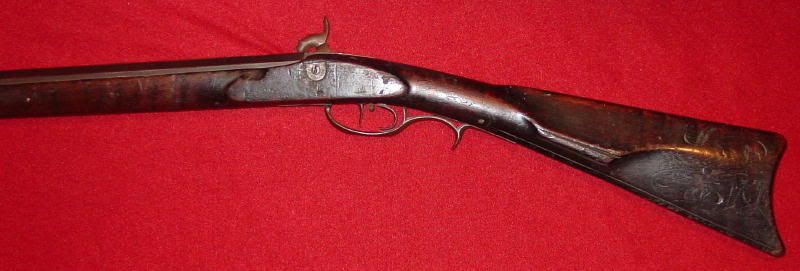

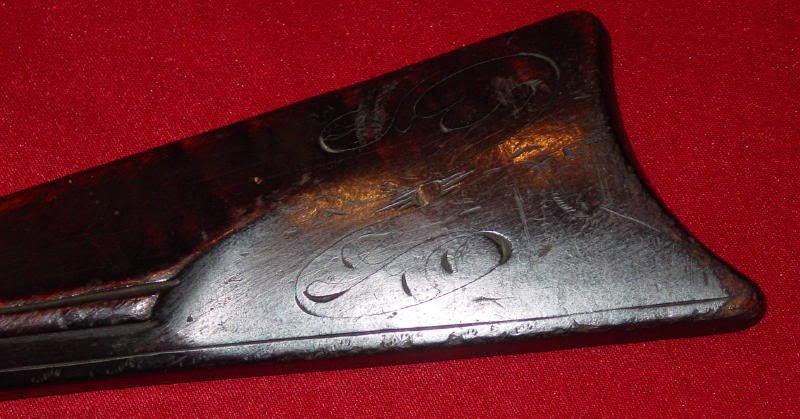


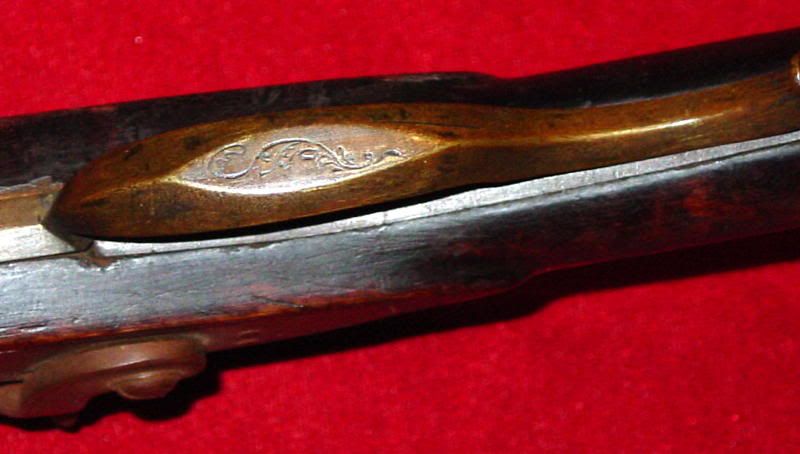



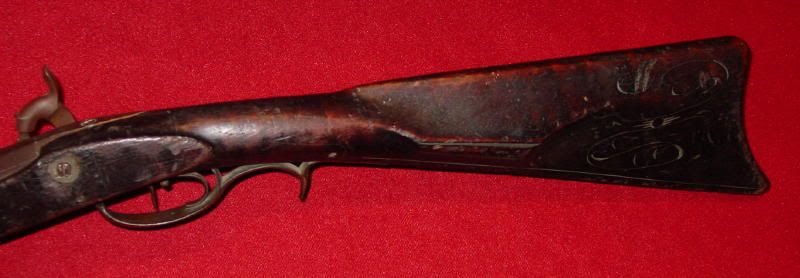


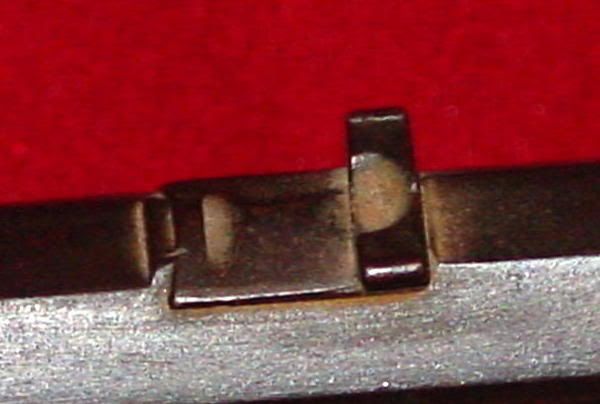


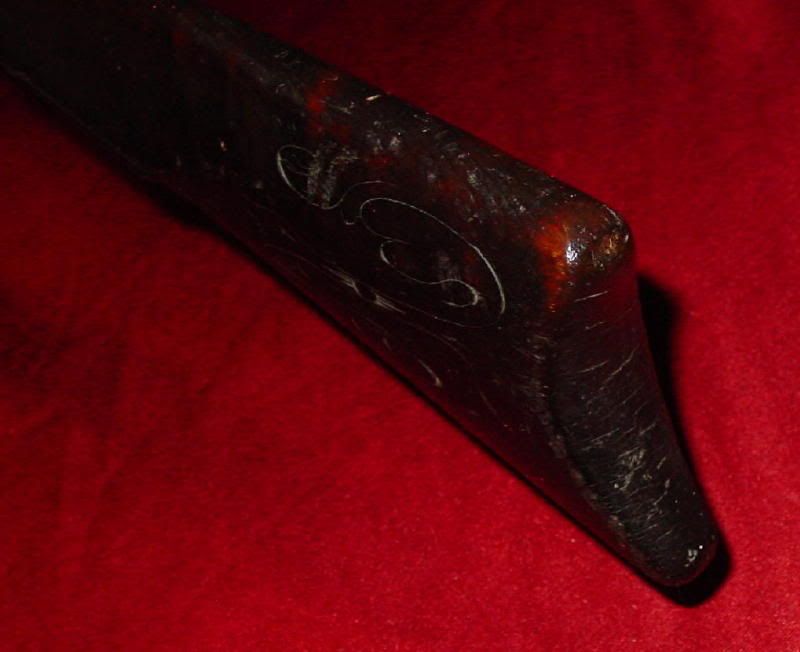


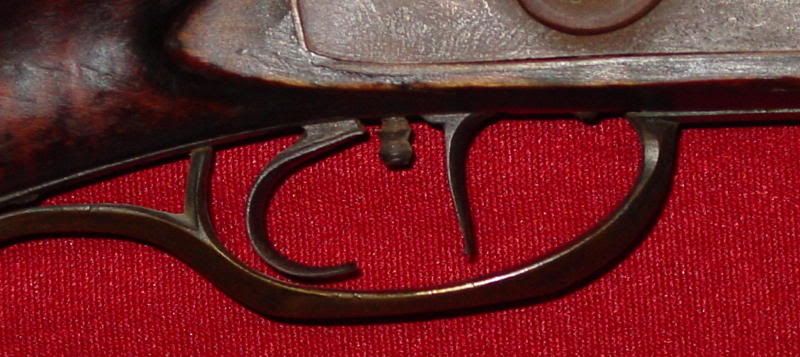
Comments:
I had the good fortune to see this rifle once upon a time and it is pure joy. It is as slender as an Illinois buggy whip, simple, but elegant. The finish and detail are wonderful even though there is no butt plate, box, rear pipe, or nose cap. The incised carving, which is very well designed and cut in, is totally unexpected, as is the engraved trigger guard. This rifle serves as one more example of the diversity of types found in Illinois.
=====================================================
XXXX's description seems to say there is substantial variation in the guns of Sam Smith. With that in mind, and the fact that Sellers list a little over 50 gunsmiths with "S. S." initials, what are the defining characteristics that let us identify a gun by Sam Smith, and that we can see repeated in his known guns to feel comfortable in the attribution? Are his initials, when engraved, always the same with the little parentheses around them?
=====================================================
XXXX, yes the script "S. S." is always found with the "parentheses" around them, at least on rifles he made in Illinois. The sights, both front and rear, are also distinctive, as are the triggers. Even the screw for adjusting the triggers is a bit different, as seen in these photos. The stock architecture on most of his rifles appears to be from the same stock pattern as this one, with the exception of those with patchboxes, which have a higher comb. Another distinctive feature is the forward hook at the rear of the rail on the trigger guard. This is present on all of Smith's rifles that I have seen, regardless of whether the trigger guard is of brass or hand-forged iron.
=====================================================
The work on the ramrod pipe, triggers ,trigger guard, butt carving ,as well as the overall shaping of the stock show his considerable ability . I am not familiar with his work , but I would bet that he made some rather ornate rifles . All the little mentioned details show he was certainly capable .

